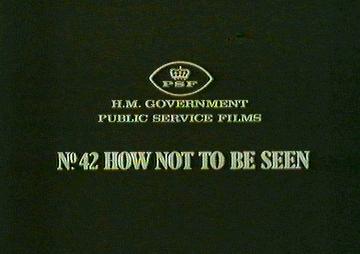 |
||||||||||||
|
||||||||||||
Posted on 02/28/2005 6:36:25 PM PST by AntiGuv
High-tech cloaking machines could one day render very small objects nearly invisible and perhaps improve military stealth technology, scientists said Monday.
The idea is straight out of science fiction -- cloaking technology made Romulan spaceships disappear in Star Trek. A humble version of the device could become a reality, according to Nader Engheta and Andrea Alu of the University of Pennsylvania.
But don't expect to hide yourself or your spaceship anytime soon, at least not in the standard sense of invisible. In practical terms, the research is more likely to lead to improved technical and research devices, and even these applications are years away. How it would work The proposal involves using plasmons -- tiny electronic excitations on the surfaces of some metals -- to cancel out the visible light or other radiation coming from an object.
"A proper design … may induce a dramatic drop in the scattering cross-section, making the object nearly invisible to an observer," Nader and Alu write in a scientific paper that was made available to the public Feb. 14. But cloaking ability would depend on an object's size, so that only with very small things -- items that are already microscopic or nearly so -- could the visible light be rendered null. A human could be made impossible to detect in longer-wavelength radiation such as microwaves, but not from visible light. A spaceship might be made transparent to radio waves or some other long-wavelength detector. The idea is in an infant stage but appears not to violate any laws of physics, according to an article Monday in news@nature.com, an online companion to the journal Nature, which provided advance copies of the story to reporters. "The concept is an interesting one, with several important potential applications," John Pendry, a physicist at Imperial College in London in the UK, told the publication. "It could find uses in stealth technology and camouflage." But Engheta, co-developer of the idea, said such applications can't even be considered yet. "Things like airplanes are very complex objects -- complex shape and complex materials -- and I do not know to what extent our concept can be applicable to that," Engheta told LiveScience. "We are still in the conceptual stage, and there are several important questions that have to be answered before any practical scenario can be considered." Plasmons are real You've seen cloaking technology at work on television, when blue backgrounds are used to make a person invisible. Alu and Engheta envision something far more sophisticated. Objects are visible in the optical range because they reflect light, a process scientists call scattering. Objects absorb light, too, and what is absorbed is not seen. The sky is blue because the atmosphere scatters blue light more than red. A plasmonic cloaker would resonate with a particular wavelength of light, so that the wavelength would not scatter. Plasmons are real, a product of a strange characteristic of light, which is made up of both particles and waves. Plasmons are created when electrons on the surface of a metallic material move in rhythm. They have other odd properties. Back in 1998, researchers led by Thomas Ebbesen of the Louis Pasteur University in Strasbourg, France shone light on a sheet of gold foil that contained millions of tiny holes. The holes were smaller than the wavelength of the light, and Ebbesen expected no light to get through. Amazingly, more light came out the other side than what hit the holes. Follow-up research found that plasmons -- jittery little waves on the surface of the metal -- were snagging light and stuffing it through the holes. "When the energy and momentum of the photons match the energy and momentum of the plasmons, the photons are absorbed and radiated again on the other side," according to an article in the May 1998 edition of Photonics Spectra magazine. Reality sets in Engheta and Alu say objects coated with perhaps loops or coils of silver or gold might do the trick. But there are many hurdles. It is not clear how even a small object could disappear in daylight, which itself contains many different wavelengths, or colors, of light. Presumably a plasmonic device would have to be built to cloak each wavelength. Anything not perfectly ball-shaped presents additional problems. The researchers' calculations suggest "homogeneous spherical objects" in the nanoscale range -- really, really small -- could be rendered optically invisible. Practically speaking, the technology, if developed, might be used in antiglare materials or to improve microscopic imaging in about five years, Engheta said.
 |
||||||||||||
|
||||||||||||
stealth ping!
|

Like a frightened turtle!
Pendry warns, however, that the concept as it stands is "no magic cloak", because it would have to be delicately tuned to suit each different object it hides. Perhaps even more of a drawback, he points out, is the fact that a particular shield only works for one specific wavelength of light.An object might be made invisible in red light, say, but not in multiwavelength daylight.
And crucially, the effect only works when the wavelength of the light being scattered is roughly the same size as the object. So shielding from visible light would be possible only for microscopic objects; larger ones could be hidden only to long-wavelength radiation such as microwaves. This means that the technology could not be used to hide people or vehicles from human vision.
But that need not undermine other potential uses, Engheta says. For example, the effect could be useful for making antiglare materials.
Another possible use for plasmonic screening is microscopy, he adds. Light microscopes could surpass their usual resolution limits by using tiny probes to measure the light field very close to the object being imaged. Such probes could be made 'invisible' so that they don't disturb the imaging signal.
And of course the shielding would work fine for concealing large objects such as spaceships from sensors or telescopes that used long-wavelength radiation instead of visible light.
This is no big deal. Heck , old age has done this to me.
It's certainly true that this initial concept provides for very limited applications, but it may represent an entry to more spectacular results.
More importantly, the mere prospect of long range cloaking has some very interesting implications with respect to the Fermi Paradox!
Old news.
Er, coating expensive things with gold or silver does NOT make them invisible to thieves.......
(It just makes what the thieves stole harder to find.)
Dang, now more people probably will get an Aston Martin like the one on the James Bond movie that I purchased off Ebay...

Huh. I'll believe it when I see it!
Heck, my car keys are invisible most mornings....

Can't we just get Kirk to steal one from the Romulans?

Japanese scientist invents 'invisibility cloak'
A Japanese scientist has developed a coat which appears to make the wearer invisible.
The illusion was part of a demonstration of optical camouflage technology at Tokyo University.
It is the brainchild of Professor Susumu Tachi who is in the early stage of research he hopes will eventually make camouflaged objects virtually transparent.
The photograph was taken through a viewfinder that uses a combination of moving images taken behind the wearer to give a transparent effect.
It's hoped the technology will be useful for surgeons frustrated their own hands and surgical tools can block their view of operations and pilots who wish cockpit floors were transparent for landings.
Thanks, I remember that post.
Just because something fails to reflect light doesn't render it invisible. The sub-chasing airplanes in WWII were easily spotted by noticing the black object blanking out stars. The solved the problem by mounting a downward shining spotlight on the bottom of the planes.
Thanks for the ping!
That leaped out at me from the Nature article. But I think they'd really need a method to cloak their communications, because it's not their ships we're looking for. They'd need to cloak all other evidence of their existence too. I doubt that there are entire colonies of ... them ... living on earth, or on the moon, all cloaked. Not unless they're the size of anthills.
Disclaimer: Opinions posted on Free Republic are those of the individual posters and do not necessarily represent the opinion of Free Republic or its management. All materials posted herein are protected by copyright law and the exemption for fair use of copyrighted works.